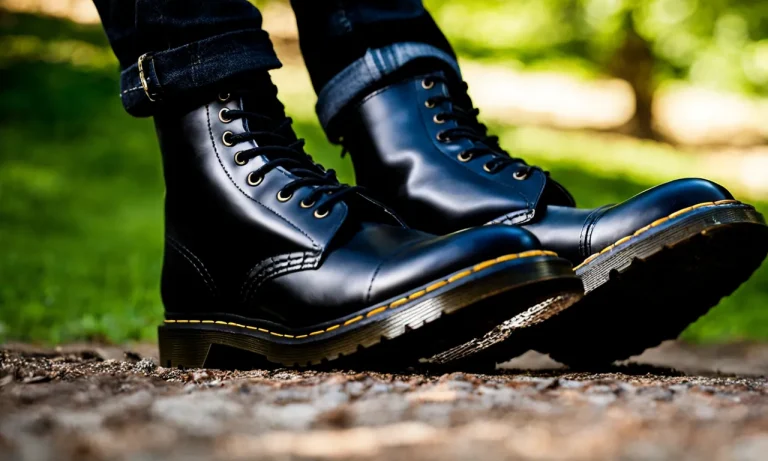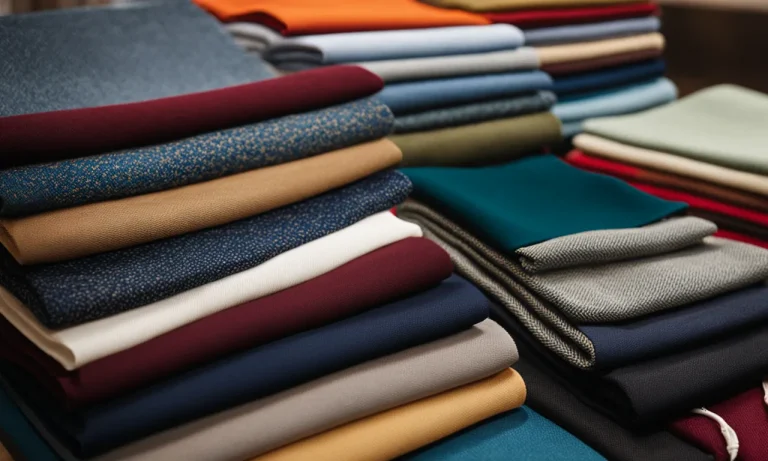How To Safely Remove A Broken Needle From Skin
Getting pricked by a broken needle can be scary and painful. If not removed properly, it could lead to complications like infection, tissue damage, or embedded fragments. Fortunately, there are several effective methods to safely get a lodged needle fragment out of your skin.
If you’re short on time, here’s a quick answer: Use tweezers or needle-nose pliers to grasp the broken end of the needle. Pull it out following the angle it went in. Disinfect the wound and watch for signs of infection.
In this comprehensive guide, we will walk you through the step-by-step process of removing a needle safely from skin. You’ll learn about different removal techniques, tools you can use, signs of complications to watch for, and aftercare tips to prevent infection and promote healing.
Assess the Needle and Wound
Determine needle position and depth
Before attempting to remove a broken needle from the skin, it is crucial to assess the needle’s position and depth. If the needle is visible and protruding from the skin, it may be easier to remove. However, if the needle is deeply embedded or not visible, it is essential to seek medical assistance to avoid further injury or complications.
If the needle is visible, it is important to determine the angle at which it entered the skin. This information can help guide the removal process and ensure that the needle is extracted in the safest way possible.
Additionally, assessing the depth of the needle can help determine if any underlying structures, such as blood vessels or nerves, are at risk of being damaged during the removal process.
Look for signs of infection
Another crucial step in assessing the needle and wound is to look for signs of infection. Infection can occur if the broken needle has been in contact with unclean surfaces or if the wound has not been properly cleaned.
Signs of infection may include redness, swelling, increased pain, warmth around the wound, or the presence of pus.
If any signs of infection are present, it is important to seek medical attention immediately. Infections can lead to further complications and may require antibiotics or other medical interventions. It is always better to be safe and have a healthcare professional evaluate the situation to prevent any potential harm.
Remember, if you are unsure about the needle’s position or if there are any signs of infection, it is best to consult a healthcare professional for guidance.
Gather the Proper Tools
When it comes to safely removing a broken needle from the skin, having the right tools on hand is crucial. Here are the essential items you will need:
Tweezers or needle-nose pliers
These tools will allow you to grasp the broken needle firmly and remove it from the skin with precision. Make sure the tweezers or pliers are clean and sterilized before use. You can sterilize them by soaking them in rubbing alcohol or boiling them in water for a few minutes.
Latex gloves
Wearing latex gloves is important to protect yourself from any potential infections or contaminants that may be present on the broken needle. Put on a pair of gloves before attempting to remove the needle to ensure proper hygiene.
Antiseptic liquid
Before and after removing the broken needle, it is essential to clean the area with an antiseptic liquid to minimize the risk of infection. Apply the antiseptic liquid to a clean gauze pad and gently wipe the surrounding skin.
Gauze pads
Gauze pads are necessary to clean the area around the broken needle and provide a sterile surface to work on. Use a clean gauze pad soaked in antiseptic liquid to gently clean the skin before and after the needle removal process.
Adhesive bandage
After successfully removing the broken needle, it is important to protect the wound with an adhesive bandage to prevent further injury and promote healing. Make sure the bandage is clean and properly applied to maintain hygiene.
Remember, safety should always be a priority when dealing with broken needles. If you are unsure about removing the needle yourself, it is best to seek medical attention from a healthcare professional. They have the expertise and tools to safely remove the broken needle and provide appropriate care.
Disinfect the Area
Wash hands thoroughly
Before attempting to remove a broken needle from the skin, it is crucial to wash your hands thoroughly. This step helps to minimize the risk of introducing any additional bacteria or germs into the wound. Use warm water and soap, and make sure to scrub your hands for at least 20 seconds.
Don’t forget to clean under your fingernails and in between your fingers. This simple act of hand hygiene can go a long way in preventing infection.
Clean skin around needle with antiseptic
Once your hands are clean, the next step is to clean the skin around the broken needle with an antiseptic solution. This helps to kill any bacteria that may be present on the surface of the skin and reduces the risk of infection.
You can use an over-the-counter antiseptic solution, such as hydrogen peroxide or rubbing alcohol, or follow the recommendations of your healthcare provider. Apply the antiseptic solution to a clean cotton ball or pad and gently wipe the area around the needle.
Remember: It is essential to be gentle while cleaning the skin to avoid pushing the broken needle deeper into the skin. If the needle is embedded deeply or the area around it is red, swollen, or painful, it is best to seek medical attention.
For more information on proper handwashing techniques, you can visit the Centers for Disease Control and Prevention (CDC) website. Always follow the instructions provided by healthcare professionals for cleaning the skin around a broken needle to ensure proper disinfection.
Remove the Needle Fragment
When dealing with a broken needle, it is important to remove the fragment safely to avoid any further injury or complications. Here are some steps to follow:
Grasp needle end with tweezers
Using a clean pair of tweezers, carefully grasp the exposed end of the needle fragment. Make sure to hold it firmly but gently to prevent it from slipping or causing additional damage. If the needle is deeply embedded, it is advisable to seek medical assistance rather than attempting to remove it yourself.
Pull out following entry angle
Once you have a firm grip on the needle fragment, gently pull it out using the same angle at which it entered the skin. This helps minimize any tissue damage and reduces the risk of leaving any small pieces behind.
It is essential to maintain a steady hand and proceed slowly to prevent any accidental movements that could worsen the situation.
Place needle in sharps container
After successfully removing the broken needle fragment, it is crucial to properly dispose of it. Place the needle in a designated sharps container, which can be obtained from pharmacies or healthcare facilities.
These containers are specifically designed to safely store used needles and prevent accidental injuries.
Remember, if you are unsure or uncomfortable with removing a broken needle yourself, it is always best to seek medical assistance. Healthcare professionals have the necessary tools and expertise to handle such situations safely.
Care for the Wound
After successfully removing a broken needle from the skin, it is crucial to take proper care of the wound to prevent infection and promote healing. Here are some important steps to follow:
Wash again with antiseptic
Once the needle has been removed, it is important to clean the area around the wound again with an antiseptic solution. This will help to kill any bacteria that may have been introduced during the removal process.
Use a clean cloth or cotton ball soaked in the antiseptic and gently dab the area surrounding the wound. Avoid rubbing the area as it may cause further irritation.
Apply antibiotic ointment
After cleaning the wound, apply a thin layer of antibiotic ointment over the area. This will help to prevent infection and promote healing. Antibiotic ointments are readily available at most pharmacies and can be applied directly to the wound using a clean cotton swab or gloved finger.
Be sure to follow the instructions on the packaging for proper application.
Cover with sterile gauze and bandage
Once the antibiotic ointment has been applied, cover the wound with a sterile gauze pad. This will help to protect the wound from further contamination and promote healing. Secure the gauze pad in place with a bandage or medical tape.
It is important to change the dressing regularly or as directed by a healthcare professional to ensure proper healing and prevent infection.
Remember, if you experience any signs of infection such as increased pain, redness, swelling, or discharge from the wound, it is important to seek medical attention. Additionally, if the broken needle was contaminated or if you are unsure of its cleanliness, it is always best to consult a healthcare professional to evaluate the risk of infection and determine if any further treatment is necessary.
Watch for Signs of Infection
When dealing with a broken needle in the skin, it is important to keep an eye out for any signs of infection. Infections can occur when bacteria enter the body through the wound created by the needle. By recognizing these signs early on, you can seek medical attention and prevent further complications.
Redness
One of the first signs of infection to look out for is redness around the site of the broken needle. If the area becomes increasingly red, it may indicate an infection. Keep in mind that a small amount of redness is normal, but if it spreads or worsens over time, it is important to seek medical help.
Swelling
Another sign of infection is swelling at the site of the broken needle. The body’s natural response to an infection is to send more blood flow to the area, which can cause swelling. If you notice significant swelling that does not subside or gets worse, it may be a sign that the wound is infected.
Drainage
Unusual drainage from the wound is also a sign that infection may be present. If you notice pus, blood, or any other fluids coming from the site of the broken needle, it is important to seek medical attention. These fluids may indicate that bacteria are present and causing an infection.
Fever
A fever is a common sign that the body is fighting off an infection. If you develop a fever after a broken needle incident, it could be a sign that the wound is infected. A fever is generally considered to be a body temperature of 100.4°F (38°C) or higher.
If you have a fever along with other signs of infection, it is essential to consult a healthcare professional.
Remember, if you experience any of these signs of infection or are unsure about the severity of your wound, it is always best to seek medical advice. A healthcare professional will be able to assess the situation and provide appropriate treatment to ensure your safety and well-being.
When to See a Doctor
While removing a broken needle from the skin can often be done safely at home, there are certain situations where it is important to seek medical attention. Here are some instances when you should consider seeing a doctor:
Cannot fully remove needle
If you have attempted to remove the broken needle yourself but are unable to do so completely, it is crucial to seek medical help. Leaving a fragment of a needle in the skin can lead to complications such as infection or further injury.
A doctor will have the necessary tools and expertise to safely extract the remaining piece.
Signs of infection develop
If you notice any signs of infection, such as increasing pain, redness, swelling, or pus around the site of the broken needle, it is important to see a doctor. Infections can be serious and may require antibiotics or other medical interventions to prevent further complications.
Ignoring these symptoms can lead to more severe issues down the line.
Needle punctured deep or joint area
If the broken needle has punctured deeply into the skin or has entered a joint area, it is crucial to seek immediate medical attention. Deep puncture wounds and injuries to joints can be more complex and may require specialized medical care.
Delaying treatment in these cases can lead to further damage and potentially long-term complications.
Remember, it is always better to err on the side of caution when it comes to your health. If you are unsure about whether or not to see a doctor, it is best to consult with a healthcare professional who can provide personalized advice based on your specific situation.
Conclusion
Getting a needle lodged under your skin can be an unsettling experience. However, in most cases you can safely remove it at home with some basic first aid tools and proper technique. Always monitor the area afterward and seek medical care if any worrying symptoms arise.
With proper care, you can avoid complications and make sure the wound heals quickly.







